Research Article Open Access
Projection of Future Changes in Rainfall and Temperature Patterns in Oman
| Yassine Charabi* | |
| Department of Geography, Sultan Qaboos University, Al-Khoudh, Muscat Oman | |
| Corresponding Author : | Yassine Charabi Associate Professor, Department of Geography Sultan Qaboos University Al-Khoudh, Muscat Oman E-mail: yassine@squ.edu.om |
| Received July 17, 2013; Accepted August 29, 2013; Published September 09, 2013 | |
| Citation: Charabi Y (2013) Projection of Future Changes in Rainfall and Temperature Patterns in Oman. J Earth Sci Clim Change 4:154. doi:10.4172/2157-7617.1000154 | |
| Copyright: © 2013 Charabi Y. This is an open-access article distributed under the terms of the Creative Commons Attribution License, which permits unrestricted use, distribution, and reproduction in any medium, provided the original author and source are credited. | |
Visit for more related articles at Journal of Earth Science & Climatic Change
Abstract
Oman is one of most water-stressed countries in the world. Therefore, keeping water and energy supply and demand in equilibrium in a pressing development is a challenge facing Oman in the years ahead. The threat from the potential impacts of climate change has growing with the recent tropical cyclones that had affected the country and caused loss of life and substantial damage throughout the coastal areas of Oman. The design of an effective climate change strategy requires a deep knowledge about the past, the present climate and also requires an accurate estimation of the plausible change in future climate. This paper presents a rather complete picture about the current (1961-1990) and future (2011-2070) projection of the pattern of rainfall and temperature. For the assessment of the future climate projection over Oman, the 21st century the Intergovernmental Panel on Climate Change (IPCC) Fourth Assessment Report (AR4) A1B, forcing scenario is used with the climate model of the National Center for Atmospheric Research (NCAR) and the Community Climate System Model (CCSM-3). The A1B scenario clearly shows future minimum temperature increases that are in line with the results shown that minimum temperatures will experience the greatest impact from climate change. The simulation shows that the northern of Oman is expected to face decreasing rainfall in the coming decades. In a region where historic average annual rainfall levels are between 50 and 100 mm for the northern coast area, climate change is expected to lead to between 20 and 40 mm less rainfall by 2040. This is equivalent to a reduction in average annual rainfall of about 40%. With less future rainfall in northern areas, groundwater recharge, surface water flow and water quality are expected to also decrease.
| Keywords |
| A1B scenario; Climate change; Oman; Rainfall; Temperature |
| Introduction |
| The Sultanate of Oman occupies the southeastern corner of the Arabian Peninsula. The country encompasses an area of about 309,500 km2, and is characterized by a diverse range of topography including mountain ranges, arid deserts and fertile plains (Figure 1). Even though Oman is an arid region, due to its complex topography, the country has a number of local climates ranging from hyper-arid conditions in the Empty Quarter and along coasts and plains, to arid conditions in foothills and highlands, to semi-arid conditions along the slopes and summits of the Hajar Mountains in the north [1-3]. |
| With regards to the water sector, Oman is one of most waterstressed countries in the world. Keeping water supply and demand in equilibrium in a pressing development challenge facing Oman in the years ahead. Agricultural production is wholly dependent on irrigation. Hence, water rather than the availability of arable land and/or suitable soils are the critical constraints. Even without climate change occurring, water availability and groundwater deterioration have been identified as major development constraints, with absolute water scarcity predicted as early as 2020 [4]. |
| The total renewable ground water supply (i.e. annual ground recharge quantity) is about 1.3 billion m3 per year. Notably, water demand in the north is about 1.6 bcm per year or about 25% more than groundwater supply. In the past few years, over pumping of wells have led lowered groundwater tables as well as seawater intrusion into aquifers. Hence, strategies and measures to balance supply and demand, already a government priority, will become critical as the climate continues to change. |
| Desalinated water, already accounting for 16% of total water supply, is considered Oman's only reliable major option to confront growing water scarcity, despite its high cost [4]. |
| The deterioration in groundwater quality has become evident in recent years. First, groundwater salinity is increasing in the Al Batinah and Salalah plains because of saltwater intrusion due to over-pumping. For example, groundwater withdrawals in South Al Batinah increased fivefold over the 1970-1995 period, from 34 mm3 to 161 mm3, with current withdrawal rates roughly double the recharge rate. Second, groundwater pollution is increasing in wadi areas. This is due to improper disposal of wastewater [4] |
| The threat from the potential impacts of climate change has growing with the recent tropical cyclones that had affected the country and caused loss of life and substantial damage throughout the coastal areas of Oman. Most recently, in June 2007, the super cyclone Gonu tracked into the Sea of Oman. This cyclone is the strongest on record in the Arabian Sea, with 900 mm of rain falling on a single day (5 June 2007) and average wind speeds reaching about 130 km/h [5]. A total of 50 people were killed as a result of Gonu in Oman, with damages of about $4.2 billion. Three years later, on 4 June 2010, the cyclone Phet made landfall in Oman, dropping 450 mm over northeastern Oman. In Oman, 24 people died with damages of about $0.8 billion. Intensity of tropical cyclones and severity of their impact may increase in future warmer climate [6-8]. |
| According to the recent census, 56% of the population of Oman are amassed in the coastal area of Al-batina and Muscat, the concentration of the population will further contribute to the degradation of air quality and intensification of urban heat island [9] (Figure 2). Under the context of climate warming, this will be translated into an increase in health hazards in urban population due to the long stay of air contaminants in the atmosphere and heat waves [10]. Another facet of this warming at regional scale is the increase in energy demand for air cooling. |
| Those extremes events have drawn the attention of the decision makers in the country, that there is an urgent need to develop a national strategy for climate change adaptation and mitigation. The design of an effective climate change strategy requires a deep knowledge about the past, the present climate and an accurate estimating of the possible change in future climate. There have been relatively few and scattered studies published in the literature about the climate of Oman. Kwarteng [11] scrutinized the statistical variability of rainfall in Oman using selected dataset derived from the Ministry of Regional Municipalities and water resources network. Charabi [12] analyzed the rainfall variability that affected the southern part of Oman during the summer season and its global teleconexion to El Nino Southern Oscillation (ENSO), and the Indian Ocean Dipole (IOD). Charabi [13] examined the atmospheric mechanism that governs the winter rainfall variability in the northern of Oman. The study focused on wet and dry spells that occurred during 1984-2007 based on composite analysis. Al-Sarmi [14] conducted a study about recent observed climatic trends for the Arabian Peninsula. |
| This study shows a clear worming trend in minimum and maximum temperature. Rainfall pattern trend in Oman indicate also a significant decrease. |
| The aim of this article is to present a rather complete picture about the current (1961-1990) and future (2010-2069) projection of the pattern of rainfall and temperature for the period. For the assessment of the future climate projection over Oman, the 21st century the Intergovernmental Panel on Climate Change (IPCC) Fourth Assessment |
| Report (AR4) A1B (CO2 Concentration 720 ppm until 2100) forcing scenario is used with the climate model of the National Center for Atmospheric Research (NCAR) and the Community Climate System Model (CCSM-3). The obtained results were developed using dynamical downscaling approach to a model grid of 30 second. |
| Baseline of 1961-1990 was used to calculate changes for precipitation, maximum temperature and minimum temperature. The IPCC AR4 climate model datasets of the 20th century experiments, forced by the Special Report on Emissions Scenarios (SRES), as well as those for the climate baseline simulations, are available through the Research Program on Climate Change, Agriculture and Food Security (CCAFS) [15]. |
| Data Sets and Methodology |
| Datasets that describe the baseline climate and the plausible future climate conditions forced with the SRES of AR4 of the IPCC at a local or regional scale and obtained throughout a dynamical downscaling from General Circulation Models (GCM) are available on the CCAFS website. The datasets contains a large range of Regional Climate Models (RCM), developed by different countries and climate modeling communities with different spatial resolutions. The datasets are available in ARC GRID, and ARC ASCII format, in decimal degrees and datum WGS84. This data format facilitates their integration in GIS environment for processing. |
| The climate model downscaling data of the NCAR-CCSM-3 was selected for this investigation due to its fine space scale (30 second). The fine space resolution is a very important for this investigation due to the complex topography and land surface of Oman, which contribute to the emergence of varieties of local climate. The climatic baseline over 1961-1990 was used to compare and calculate projected changes (anomalies) for the average annual maximum temperature, average annual minimum temperature, and annual precipitation. The pattern of temperature and rainfall anomalies was calculated for each raster cell grid using Arc-Map software for short term (2011-2040) and medium term (2041-2070). Future climate simulation related to the IPCC's A1B Greenhouse Gas (GHG) emissions scenario was chosen, to assess future temperature and rainfall projections. This scenario provides an intermediate level of warming by the end of the century and predicts a future where technology is shared between developed and developing nations in order to reduce regional economic disparities. |
| Baseline climate |
| By virtue of its position astride the Tropic of Cancer, and according to the Köppen and Geiger classification system [16] Oman is classified as an arid region. Nevertheless, due to its large latitudinal extent and complex topography, Oman has a number of local climates across its territory. These local climates range from hyper-arid conditions (<100 mm/year of rainfall) in the Empty Quarter (Rub Al Khali) and along coasts and plains, to arid conditions (100-250 mm/year of rainfall) in foothills and highlands, to semi-arid conditions (250-500 mm/year of rainfall) along the slopes and summits of the Hajar Mountains in northern Oman. Scarce and erratic rainfall and varying temperatures have combined to shape the distribution and abundance of vegetation [2]. |
| Temperature is affected by major air masses that occur in the Arabian Peninsula. Specifically, the Polar Continental air mass occurs in winter from December to February and brings cold temperatures and high pressure. The Tropical Continental air mass occurs in summer from June to September and brings hot and very dry air. |
| Both systems are affected by minor incursions of Polar Maritime and Tropical Maritime [9,13]. The historical temperature profile in Oman due to these air masses is described below based on the 1961-1990 period (Figure 3). |
| Average annual temperature: Overall, these temperatures fluctuate between 10°C to 30°C. The lowest average annual temperatures are found at peaks in the Hajar Mountains. Most of the rest of the country experiences average annual temperatures within a narrow range between 26°C and 28°C. |
| Average maximum temperature: The hottest month of the year in Oman is June. During this month, average maximum temperatures are between 23°C and 42°C. Coastal regions are hot and humid in summer with maximum temperatures around 40°C and humidity levels exceeding 90%. In the interior plains, high temperatures in summer can exceed 42°C. |
| Average minimum temperature: The coldest month of the year in Oman is January. During this month, average minimum temperatures are between -3°C and 20°C. Coldest temperatures are encountered in highland and mountain areas in the northern and southern part of the country. |
| Rainfall is caused by four principal mechanisms-convection, cold frontal troughs, monsoons, and tropical storms/cyclones-and their interactions with local topography and other meteorological conditions [11,12]. Historical rainfall patterns in Oman are described below based on the 1960-1990 period (Figure 4). |
| Average annual rainfall: Overall, rainfall fluctuates between 27 and 400 mm/year. The lowest average annual rainfall is found in the interior plains and coastal areas along the Arabia Sea. The highest average annual rainfall is found around peaks in the Hajar Mountains. Most of the highland areas of the country experience average annual rainfall within a narrow range between 50 and 100 mm/year. |
| Average summer rainfall: During the summer months of June through September, average rainfall is between zero and 20 mm for the overwhelming majority of the country. Indian summer monsoon brings the monsoon rains (locally known as khareef) along the Dhofar coast and bordering mountain areas. The average rainfall amount is between 20 and 60 mm during the summary months (between 100 and 400 mm per year). During the khareef season, parts of Dhofar region are transformed into lush landscapes of green field and verdant vegetation [12]. |
| Average winter rainfall: During the winter months of November through April, average rainfall is between 20 and 60 mm for northern parts of the country, and between zero and 20 mm for the rest. Cold frontal troughs originating in the North Atlantic or Mediterranean Sea are common during this period and are responsible for the rain in north of Oman. Physiographic conditions significantly affect average winter rainfall. For example, Muscat along the coast receives about 75 mm during winter. On the other hand, high elevation areas in the Hajar Mountains (400-3,000 MSL) receives between 80 and 120 mm in the winter months (between 250 and 400 mm per year) [13]. |
| Future climate |
| (Figure 5) shows the simulated average maximum temperature change during the periods 2011-2040 (Figure 5-a), and 2041-2070 (Figure 5-b). It can be seen from these figures, that A1B scenario clearly shows an increase in future maximum temperature in the range of 1°C to 2°C for the entire country through 2040, with the areas showing the highest change along stretches in the open desert just east of the UAE and along portions of the coast by the Arabian Sea. By 2070, average maximum temperatures are projected to increase in the range of 2°C to 3°C, with the geographic distribution of these changes following similar patterns as in the earlier period. (Figure 6) shows the simulated mean minimum temperature changes during the periods 2011- 2040 (Figure 6-a), and 2041-2070 (Figure 6-b). It can also be seen from these figures, that A1B scenario clearly shows future minimum temperature increases that are similar to the results shown for maximum temperature changes. For both time periods, there is a clear expansion compared to results for maximum temperature change, suggesting that minimum temperatures will experience the greatest impact from climate change. By 2070, most of the land area just south of the Hajar Mountains from the UAE border to the Arabian Sea is projected to experience an increase in average minimum temperatures by about 3°C. |
| (Figure 7) shows the simulated average annual rainfall changes during the periods 2011-2040 (Figure 7-a), and 2041-2070 (Figure 7-b). It can be seen from these figures, that A1B scenario clearly shows that most of Oman will become drier, with large portions of the Hajar Mountains receiving up to 40 mm less in annual rainfall throughout the projection period. On the other hand, model results indicate that summer monsoons are likely to intensify, leading to increased rainfall in the southwestern parts of the country. By 2070, most of the Dhofar governorate and a large portion of the Al Wusta governorate are projected to receive up to 20 mm more in annual rainfall, with up to 60 mm more rainfall along coastal zones in the far southwestern parts of Oman. |
| Rational for adaptation strategies and policies |
| Water resources are already facing considerable threats in Oman. With climate change, it is expected that the prevention of groundwater degradation and balancing supply and demand will become even greater challenges. As discussed previously, northern Oman is expected to face decreasing rainfall in the coming decades. In a region where historic average annual rainfall levels are between 50 and 100 mm for the northern coast area, climate change is expected to lead to between 20 and 40 mm less rainfall by 2040. This is equivalent to a reduction in average annual rainfall of about 40%. With less future rainfall in northern areas, groundwater recharge and surface water flow are expected to also decrease. When combined with continued socioeconomic growth, current challenges in balancing water supply and demand will grow more difficult, as will the capacity to maintain water quality standards. Moreover, greater rainfall variability and longer drought episodes may adversely impact already fragile and vulnerable mountain ecosystems in the region. |
| Integrated water resource management (IWRM) is considered a fundamental organizing framework to identify and evaluate potential adaptation strategies for water resources. The principles of IWRM are particularly applicable to Oman's circumstances of accelerated socioeconomic development producing increasing water demands against a backdrop of decreasing and deteriorating freshwater supply. The following objectives represent a starting point for future adaptation planning in Oman: |
| • Ensure a balance between water use and renewable water supply in order to preserve water resources, limit pollution, and support ecosystem functions. |
| • Pursue water security especially during drought periods through greater use of treated wastewater. |
| • Promote sustainable resource use by balancing water consumption by industrial, commercial, tourist and agricultural activities with water resource constraints. |
| • Enhance water supply by freshwater exploration/discovery, groundwater recharge initiatives, surface dam construction, rainfall harvesting techniques, and greater use of nonconventional water resources such as desalination, use of treated wastewater or brackish water. |
| • Undertake hydrologic, socioeconomic, and management studies of high priority water catchment basins in order to better understand available water supply/demand dynamics. |
| • Conduct comprehensive techno-economic assessments of strategies to ensure balance in future water supply and demand in order that costs, technologies, resources, and local management systems are fully accounted for in policies and planning. |
| • Conserve water and preserve water quality through new legislations and institutional reform at the national and regional levels. |
| Enhance public awareness of water scarcity through campaigns as an initial measure to reduce water use in domestic, industrial and agricultural sectors. |
| Conclusions |
| Oman’s baseline climate was evaluated relative to temperature, rainfall patterns using proxy data. With climate change, these baseline conditions are expected to change. Projected changes in temperature and rainfall were assessed and the results of this assessment formed the basis by which the vulnerability of the country to climate change could be understood. |
| During the last four decades, water tables in Oman have dropped sharply as demand from rapidly urbanizing populations. Currently, more than 16% of the water used originates from non-conventional water resources (desalination or wastewater treatment). However, in the mid-term perspective, the growing freshwater demand in Oman cannot be sustained by the reliance on fossil water reserves, and the exclusive remedy will be for water desalination which will going to rise drastically. The desalination plants that are currently operating in Oman already have adverse environmental effects such as releasing gases, hot brine, treatment chemicals and other trace elements. Next to the production costs and carbon-emissions of this energy-intensive industry, their impact on marine life might become a liability. |
| In the light of the depletion of oil and natural gas in the country and the Vision for Oman’s Economy 2020, for take-off towards selfsustained growth in a private sector-led and an-oriented economy with diversified sources of national income, there is a quick need for Oman to build their national strategy for climate change adaptation and mitigation. Climate change impacts predicted for Oman will adversely affect the extent and the speed at which long-term, medium and even short-term national development goals will be achieved. It is clear that the cost of addressing impacts of climate change will far outweigh the cost of no action. Action on climate change is required across all sectors. A national strategy for climate change adaptation-is a necessary course of actions. This strategy should integrate and applies the best and most applicable approaches, tools and technologies. The involvement of policymakers, researchers, the private sector and civil society in the elaboration of the strategy and actions plan is vital. |
References
|
Figures at a glance
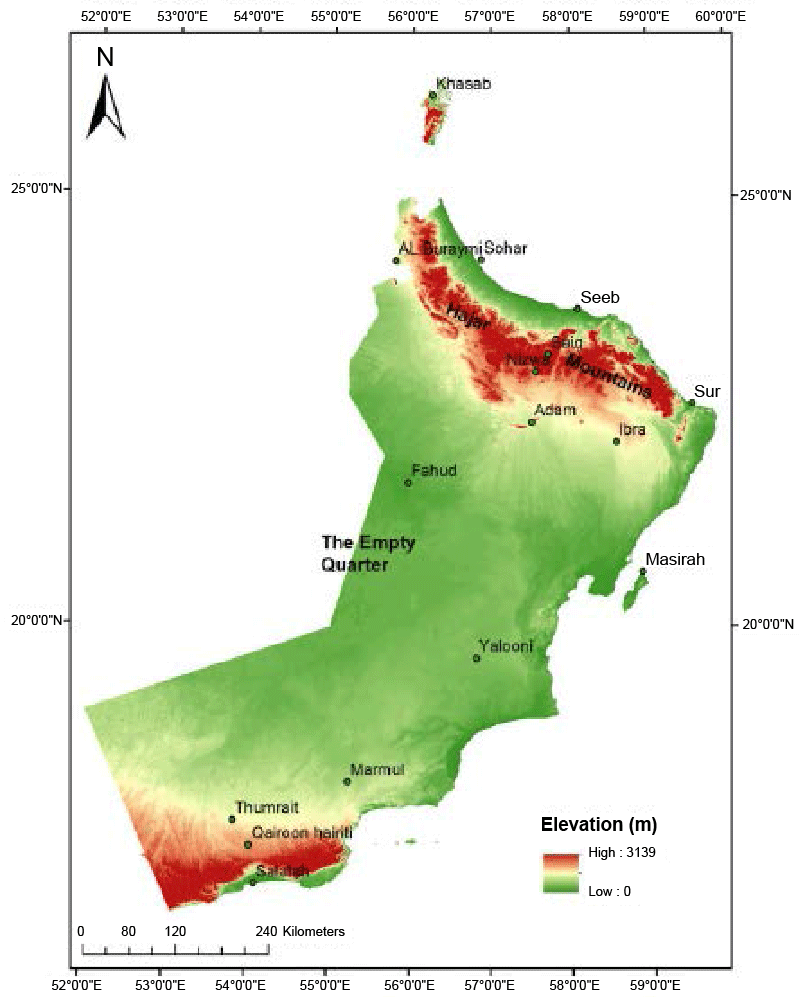 |
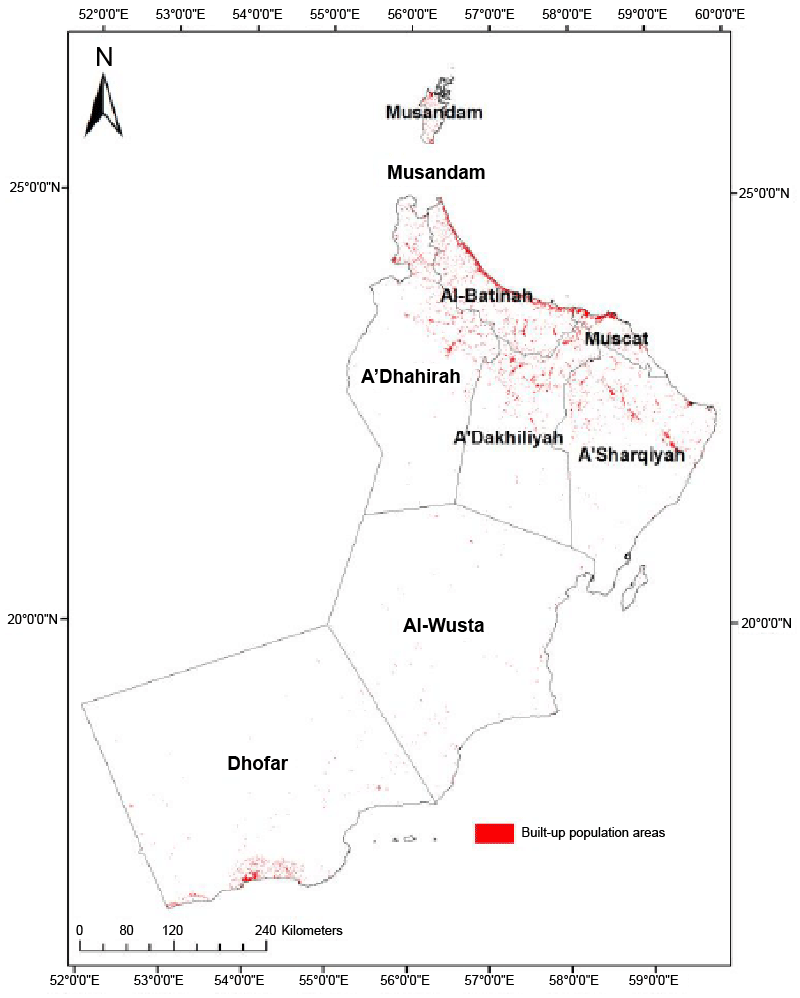 |
 |
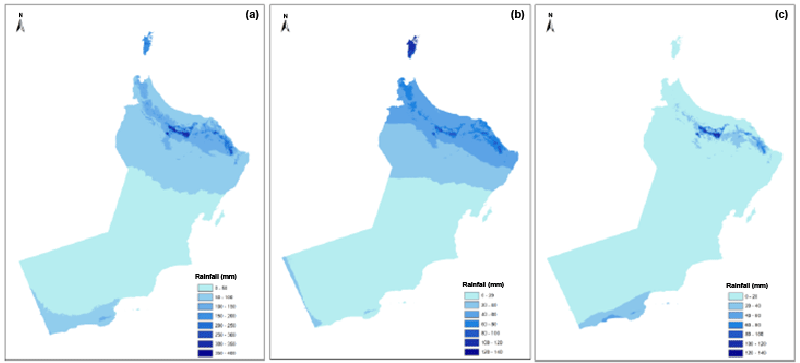 |
| Figure 1 | Figure 2 | Figure 3 | Figure 4 |
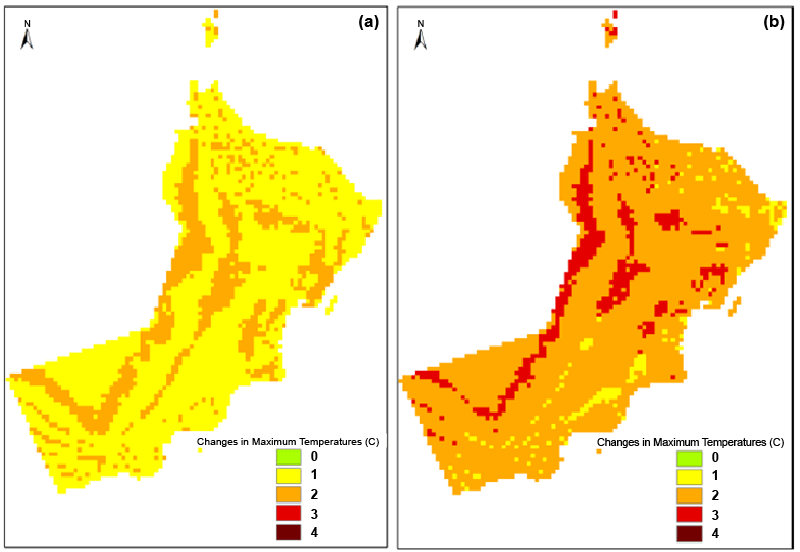 |
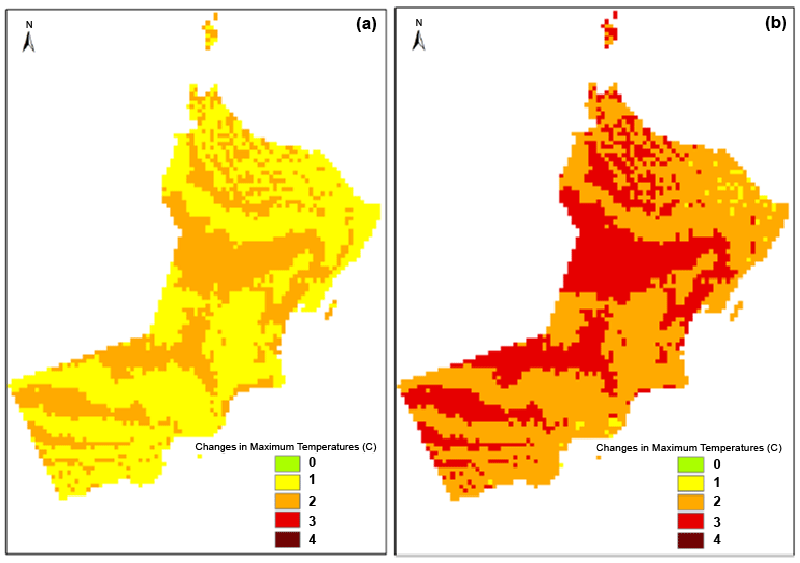 |
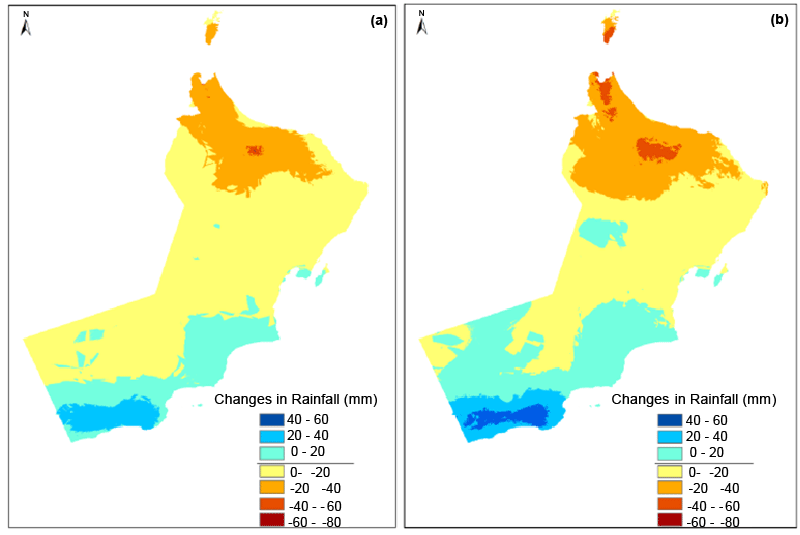 |
|
| Figure 5 | Figure 6 | Figure 7 |
Relevant Topics
- Atmosphere
- Atmospheric Chemistry
- Atmospheric inversions
- Biosphere
- Chemical Oceanography
- Climate Modeling
- Crystallography
- Disaster Science
- Earth Science
- Ecology
- Environmental Degradation
- Gemology
- Geochemistry
- Geochronology
- Geomicrobiology
- Geomorphology
- Geosciences
- Geostatistics
- Glaciology
- Microplastic Pollution
- Mineralogy
- Soil Erosion and Land Degradation
Recommended Journals
Article Tools
Article Usage
- Total views: 24323
- [From(publication date):
October-2013 - Oct 26, 2025] - Breakdown by view type
- HTML page views : 18967
- PDF downloads : 5356
